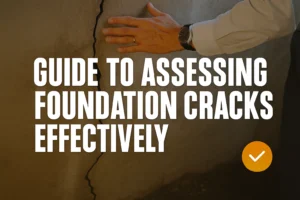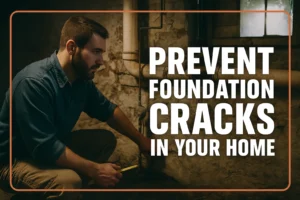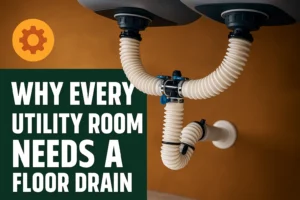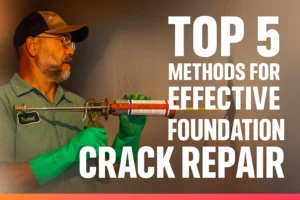It is a good idea to install a basement sump pump. This will help protect your basement from flooding and water damage, one of the most costly problems that can afflict any homeowner. Rising water tables and heavier rains make flood-proofing essential in many areas of the country today if for no other reason than keeping out unwanted amounts.
So having the right sump pump can make all the difference in keeping your basement dry and your home safe. The question then becomes, which is best for you? But with so many options on the market, it is hard to know where a person should start. This blog will look at the types of sump pumps, present top-rated devices, and explain what to look for in a sump pump system in your basement.
Why is a Sump Pump Necessary for Basement Waterproofing?
To any effective basement waterproofing system, a sump pump is essential because it actively removes water that has gathered beneath the foundation of your home. This prevents flooding and reduces moisture levels, which helps protect your basement from water damage, mold growth and structural problems.
The way a sump pump operates is so simple that it can be expressed in a few words, simplicity that masks its power. It sits in a sump pit way down at the lowest point of your basement and uses a float switch to detect rising water levels. When water becomes too high, the pump is activated, pushing that water out through a pipe so it drains far away from your foundation. This continuous action keeps your basement dry actually prevents humidity and so maintains a better quality level of indoor air.
Key Features to Look for in the Best Sump Pumps
As you select the best sump pump for your basement, keep in mind your choice will depend largely on how well it works and how cheaply you can keep your basement dry.
| Feature | Description |
| Motor Power/Horsepower | Determines pumping strength; 1/3 HP for typical basements, higher HP for heavy water loads. |
| Material Quality | Durable materials like cast iron or stainless steel increase pump lifespan and resistance. |
| Automatic Float Switch | Automatically activates pump based on water level to prevent basement flooding. |
| Pumping Capacity | Measured in gallons per minute (GPM); must match basement water volume and discharge needs. |
| Check Valve | Prevents water from flowing back into sump pit, ensuring efficient water removal. |
| Backup Power | Battery backup pumps operate during power outages, crucial for continuous protection. |
| Noise Level | Submersible pumps are quieter; consider noise if basement is used frequently. |
| Maintenance | Easy access and simple maintenance features help keep pumps running efficiently. |
Top 5 Sump Pump Systems for Basement Protection
A sump pump system is an important part of your basement water protection plan. It removes water from the deepest part of your basement or sump pit actively before it gets a chance to do damage. Below are some of the top sump pump systems that offer guaranteed, effective basement protection.
Basement Systems TripleSafe Pump
The Basement Systems TripleSafe Pump offers triple protection: it operates with three pumps, including one primary motor-driven pump, another generator-driven pump, and a third pump powered by batteries. This system ensures constant, reliable protection even if electrical power fails or if the pump itself It is thus one of the most reliable sump pump installation systems for basements prone to flooding
PermaSEAL Sump Pump System
The PermaSEAL Sump Pump System efficiently removes water and features a reliable alarm system. It includes single or dual pumps with high water alarms to alert homeowners to rising water levels. The system also contains check valves, which stop water flow back into networks that can cause flooding, contributing to good operation and easily manageable basement protection

Submersible Sump Pumps
The sump pit is submerged with its electric motor and water cooling, but this allows for strong and silent pumping performance. These are effective when there is a need to drag large volumes of water from place to place. They are suitable for basements with frequent or heavy flooding
Pedestal Sump Pumps
Pedestal sump pumps have their motors mounted above the sump pit, so they are easier to inspect and maintain. However, these CPU units are generally less powerful and noisier than submersible pumps. Suitable for smaller basins or basements that only receive a little water once in a while.
Sump Pumps with Battery Backup Features
Battery backup sump pumps provide essential protection during power outages, a common time for basement flooding. When the main sump pump suddenly shuts down, these pumps automatically jolt into action. Continuously, they remove water for you and no matter what happens above, your basement gets protection. Isolate the above-ground electrical system and you can still drain water to safety underground with one last gasp of electricity from back-up power supplies.
Sump Pump Cost Comparisons
When choosing the best sump pump system, cost alongside reliability and features ranks as an important factor. Here is a rough cost comparison (as of 2025 fall) given for the main types of sump pumps.
| Sump Pump Type | Price Range (Pump Only) | Installation Cost Estimate |
| Submersible Pumps | $200 – $500 | $800 – $1500 |
| Pedestal Pumps | $75 – $300 | $500 – $1000 |
| Battery Backup Pumps | $150 – $600 | $700 – $1200 |
| Triple Pump Systems | $1,000 – $2,500 | $1,500 – $3,000 |
Additional Notes:
- Installation costs will vary widely, depending on where you live, the condition of the sump pit, and how complex a system is required.
- Repairs and maintenance costs can be expensive, especially for more elaborate systems.
- Purchasing a high-quality, durable sump pump system can save money in the long run by averting water damage.
The choice of sump pump largely depends on how likely your basement is to flood, your budget and the extent to which you want backup protection. A professional can help you design a setup that balances cost and effectiveness.
Conclusion
The selection of the right sump pump system is key to protecting your home from flooding and water damage. The right pump can not only keep your basement dry, safe, and free of moldy odors, but will also save money on its operation for you as the homeowner. Whether you choose a simple submersible pump or an upgraded triple-pump system that includes battery backups, many factors will affect the cost to install them. The professional installation of high-quality equipment not only protects your house but also protects your investment.
When it comes to installing a sump pump or waterproofing your basement, you can trust the skill of a reputable company like Lapans Basement Waterproofing Service. Our experienced team is well-trained and dedicated to keeping your basement dry so you can feel safe in your home. Call for your free consultation today!
FAQs
If you’re suffering from frequent or heavy flooding, submersible pumps are the best choice because they are both powerful and efficient.
In the event of a power outage, it’s highly recommended to have a battery backup pump to keep your basement from flooding.
It’s a good idea to check and maintain your pump every six months, especially before the rainy season.
While skilled DIYers can install sump pumps on their own, it’s recommended that you have professional installation to ensure both safety and optimal performance.
With proper care, a sump pump usually lasts 7 to 10 years.







